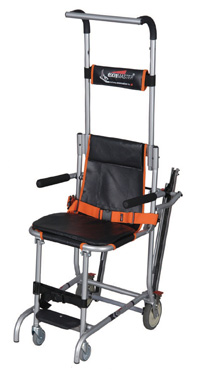 Add My Company
Add My Company
Fire Escapes and Disabled Access

All employers have an obligation to ensure that their fire escape plans take account of disabled people. The specific responsibilities this entails are laid out by the following laws and regulations:
-
Making 'reasonable adjustments' to premises so that employees can leave safely in the event of fire (Disability Discrimination Act 1995)
-
Providing means of fire escape that are useable by disabled people (Fire Regulations and the Fire Precautions Act)
-
Ensuring new or altered buildings can still be escaped from by disabled people (Building Regulations)
-
Carrying out fire safety risk assessments, which include provisions for staff and visitors with impaired sight or hearing (Fire Reform Order)
Possible fire safety measures for the disabled
There are a number of possible strategies for making a workplace's fire safety arrangements easier for the disabled to use. These may include:
-
Drawing up emergency plans in conjunction with disabled members of staff
-
Creating temporary refuges (fire-proof areas with their own escape routes) on each floor, as an alternative to stairways for wheelchair users
-
Familiarising vision-impaired staff with escape routes
-
Create Personal Emergency Evacuation Plans ('PEEPs') for each disabled member of staff, tailored to their individual needs
-
Having visual ways of alerting hearing-impaired staff that an evacuation is underway
As with any other changes to a building, office construction work to provide fire escapes for the disabled can only be done after consultation with the relevant planning department and fire authority.
Fire escape descending wheelchairs
It may be appropriate to provide a specialist stair descending wheelchair, such as the exitMASTER EMVE model illustrated to the right.
For more information on Fire Escapes and Disabled Access talk to Fire Escape Ltd

